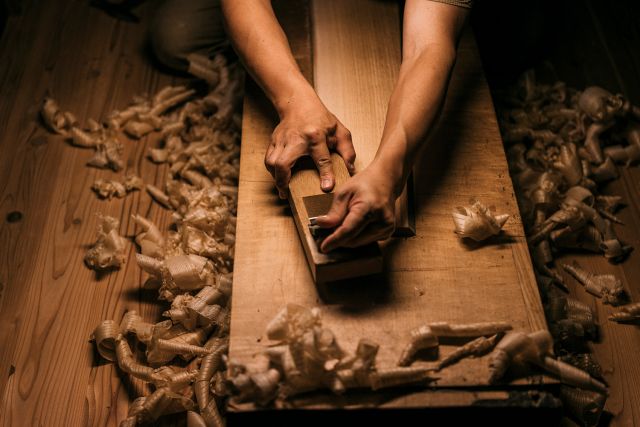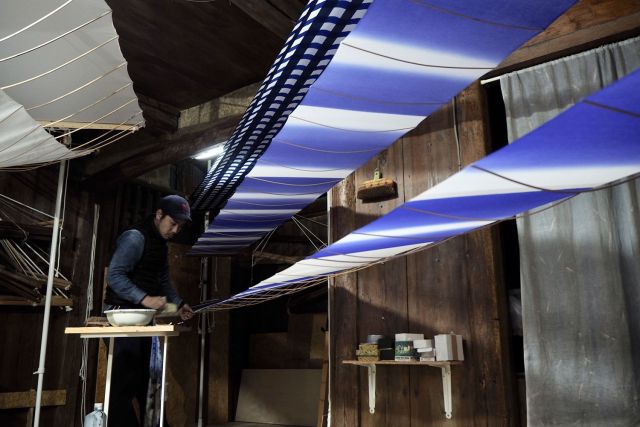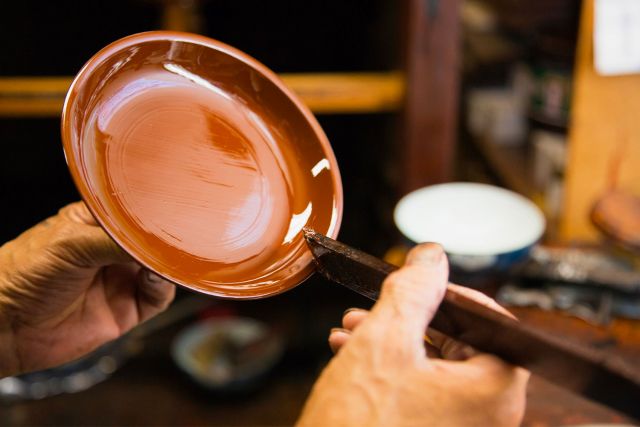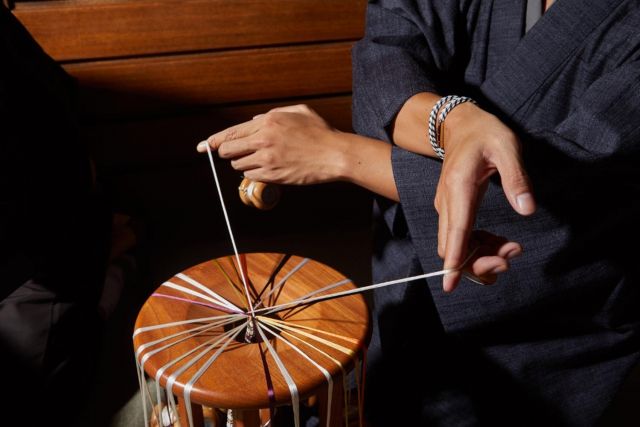This decorative paulownia box, with bamboo inlay, is inspired by the treasures of Shosoin, which have been passed down from generations for 1,200 years.
Length 29.7 cm
Width 9.5 cm
Height 6 cm
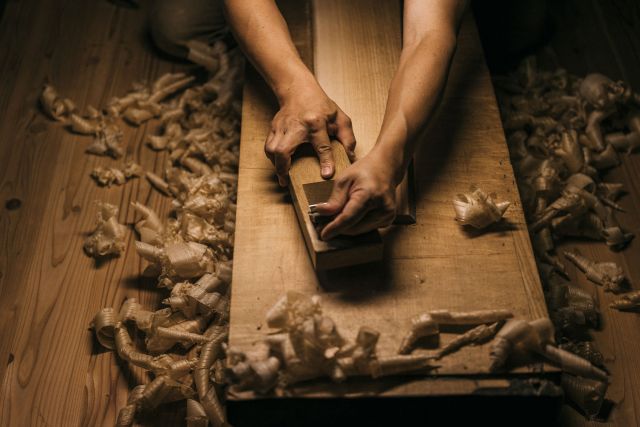
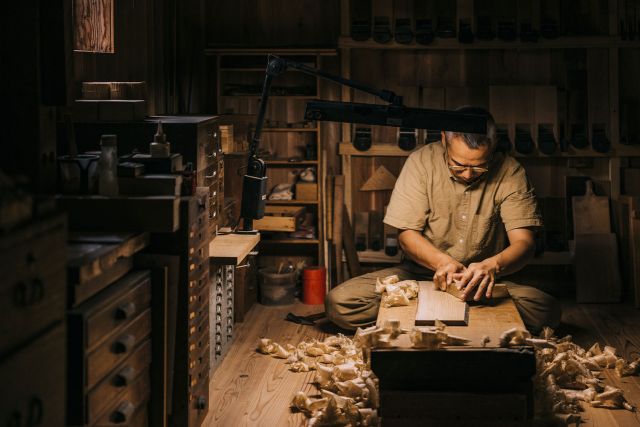
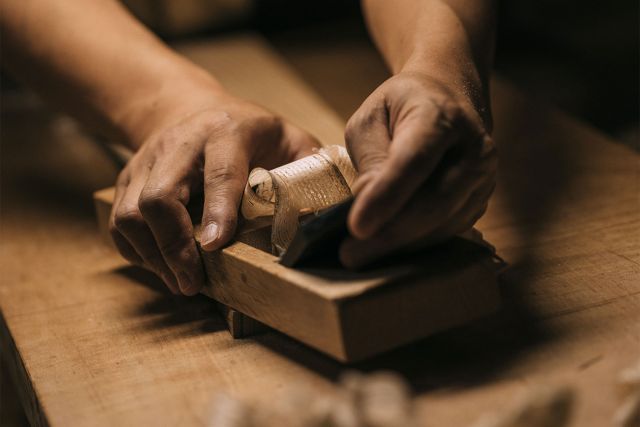
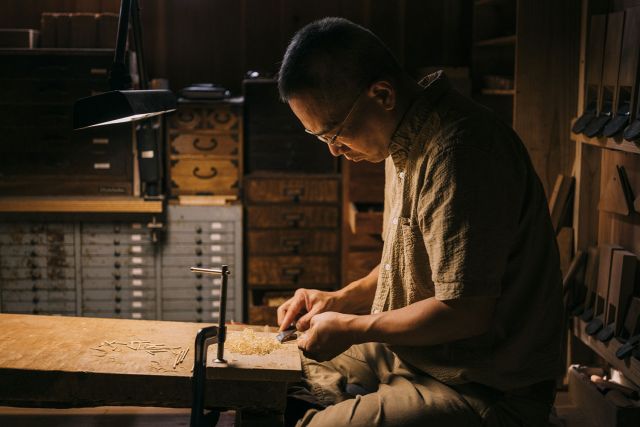
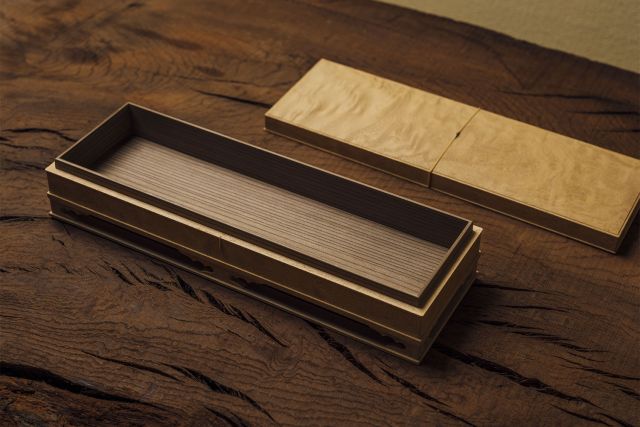
Tomoya Hyodo
- Woodworker
- Keihokushimoyugechō, Japan
- Master Artisan
By appointment only
+81 758540125
The beauty of precision
- • Tomoya specialises in making pieces for tea and incense ceremonies
- • He uses traditional techniques and natural materials
- • His works store national treasures and cultural items
Hyodo Tomoya is a master of “Sashimono”, a traditional Japanese technique for assembling wooden items without using nails. Fascinated by the precision of machinery, Tomoya first pursued a career as a race car mechanic before moving on to study woodworking. After encountering the beauty of minutely crafted “Sashimono” wooden boxes, he decided to become an artisan. "Experiencing the joy of making and learning by working with natural materials" is what he likes the most about his work. His commitment to materials and to achieving a perfect result, which makes his work unique, comes from his prior experience in ironwork, dyeing and furniture making, where he learned about the characteristics and cultural background of each material.
Read the full interviewWorks
Photo: © Naoki Miyashita

Photo: © Naoki Miyashita
An engraved Paulownia tea box inspired by the Tales of Ise, a collection of short stories written 1,000 years ago. A love poem from the collection is inscribed on the box in Japanese kana characters.
Length 19 cm
Width 12 cm
Height 11 cm

Photo: © Naoki Miyashita
These tea ladles, used in tea ceremony to scoop matcha, are carved out of various kinds of wood. As part of a tea set, they provide a different sensibility compared to ladles made of bamboo.
Length 18.5 cm
Width 1 cm
Height 1.5 cm

Photo: © Naoki Miyashita
A paulownia storage box and “futomaki”, which is a wooden insert, used to support restored hanging scrolls when rolled up for safekeeping, including national treasures.
Length 77.5 cm
Width 10.8 cm
Height 10.5 cm
Length 74.5 cm
Width 5.5 cm
Height 5.5 cm





